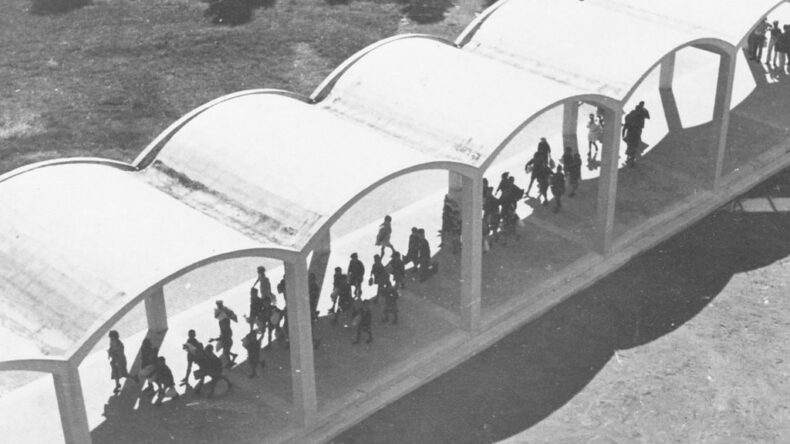Time regained, stories of Jewish Italian architects

With a remarkable ceremony, held in January 2020, the Association of Architects of Rome had decided to invalidate the act of expulsion of four of its members that had been dismissed with the promulgation of the Italian racial laws. An act that has now no more value, but that stands as a symbolic gesture of rupture from an infamous past. “Time regained. Stories of Jewish architects”, inaugurated at the MAXXI – the National Museum of 21st Century Arts of Rome – is linked also to that moment. The exhibition is conceived as part of the international project “Architecture and Remembrance”, with the collaboration, among others, of the CDEC Foundation of Milan. Prominent among the rooms of the Capitoline museum, devoted to contemporary history and its protagonists, are “nine different stories of design approach and life experience”.
The exhibition – which commemorates the mark left by figures such as Daniele Calabi, Angelo Di Castro, Romeo Di Castro, Enrico De Angeli, Vito Latis, Gino Levi Montalcini, Alessandro Rimini, Ernesto Nathan Rogers, Nina Livia Viterbo – is based on archival documents, design projects and testimonies. Moreover, it is guided by the commitment to restore the “personal and professional dignity” of these nine personalities who faced the violence of fascist antisemitism.
Many insights arose also during the event that prefaced the exhibition, a conference dedicated to “Architecture and Remembrance” that saw the participation of scholars and professionals who contributed to this initiative. This is part of an itinerant enterprise that arrived just a few days ago it arrived in Milan where an event was held in memory of Alessandro Rimini, designer of many of the buildings in the city who continued to work under the false identity of Guido Lara. “The key concept that we must bear in mind is that the racial laws have resulted in an overall loss for Italy and for Europe, so much so that it entailed a proper cultural suicide”, said Gadi Luzzatto Voghera, director of the CDEC Foundation.
Italy, in this sense, would “expiate decades of oblivion” regarding the persecutions and its related responsibilities. The project presented in these days therefore aims to fill in “the Remembrance gaps”. Also, the scholar added, the gaps in the historical documentation that can be found in the archives of the Association itself.
The event began with the greetings of Alessandro Giuli, president of the MAXXI Foundation, and Marco Maria Sambo, secretary of the Association of Architects of Rome. The latter read the minutes of the expulsion of the four architects registered in the Capital: an incisive choice aimed at illustrating the climate of complicity and bureaucratic indifference with which these measures were carried out. “No coercive power can win over freedom, creativity and genius,” Giuli commented. “We are here today – he said – to represent the redemption of the Remembrance through the civil and social function of the arts represented by the MAXXI”.
Above, a project by Daniele Calabi, Colonia Principi di Piemonte, Alberoni al Lido di Venezia, 1936-1937. Courtesy Università Iuav di Venezia, archivio fotografico Archivio Progetti.
Translated by Annadora Zuanel, revised by Laura Cattani, students at the Secondary School of Modern Languages for Interpreters and Translators of the University of Trieste, interns at the newspaper office of the Union of the Italian Jewish Communities – Pagine Ebraiche.
